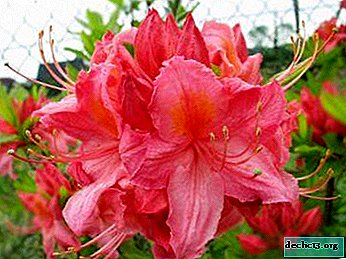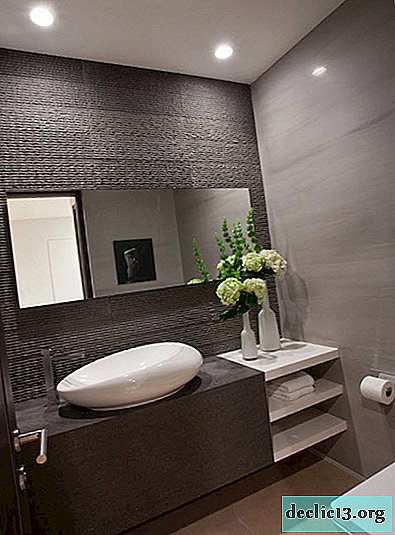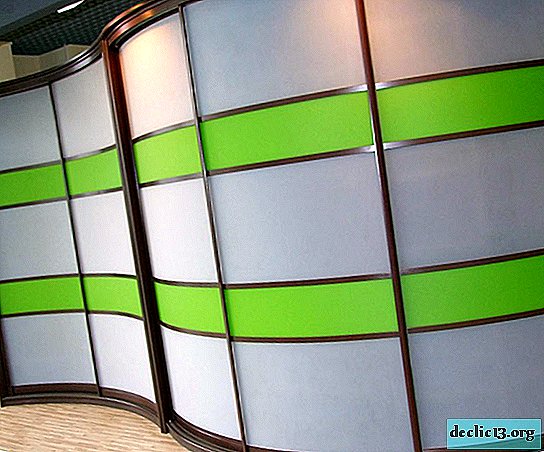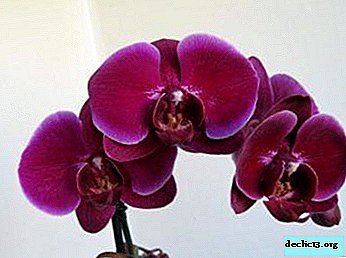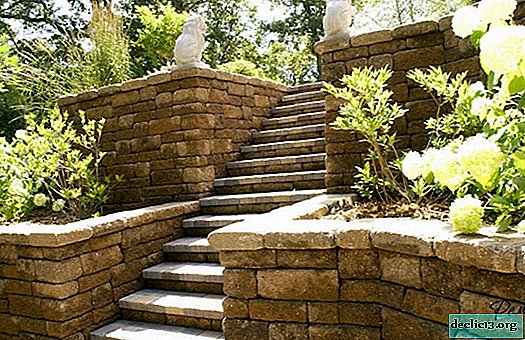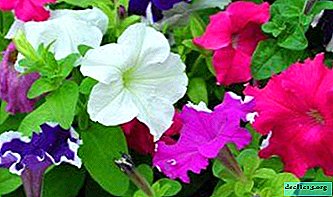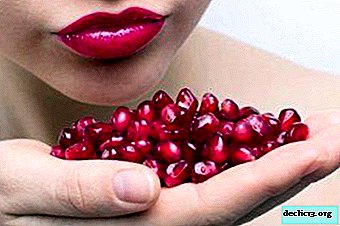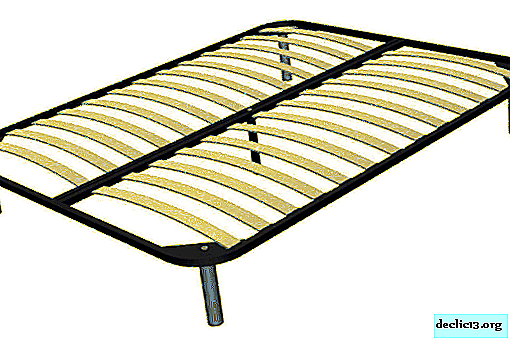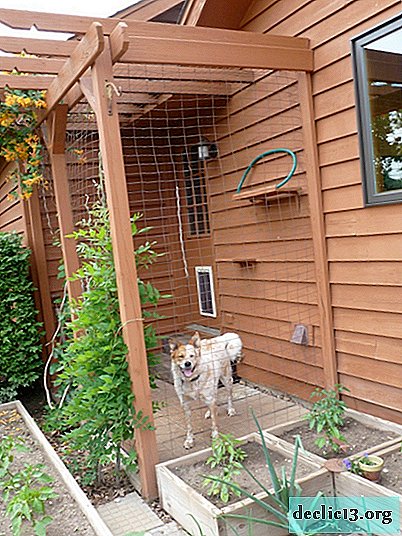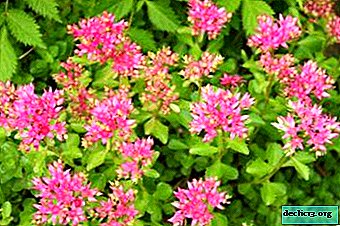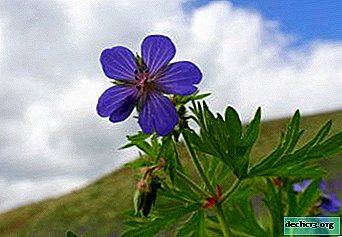Propagation of the leaf-shaped cactus of the epiphyllum
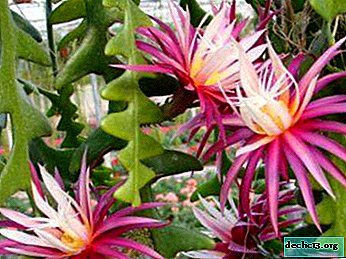
It’s impossible not to fall in love with the epiphyllum! A flower that is very unpretentious in its care pleases annually with lush flowering, the beauty of which the most exotic and expensive plants can envy. It is not surprising that many florists want to get this plant in their collection.
And those who once acquired a miraculous cactus are faced with the question of the reproduction of this succulent and how to root the cuttings. This article will answer all questions about breeding this amazing forest cactus at home.
What season is the best time to propagate?
Florists agree that The optimal time of year for the propagation of epiphyllum depends on the intended method of growing the plant. If propagation by seeds is planned, then even during the flowering of a cactus (spring - summer), you need to take care of the seed. A pollinated flower gives a large (plum-sized) fruit containing a large number of seeds. They need to be removed from the fetus, washed and dried. Specialists recommend sowing seeds in the soil in early spring. Epiphyllum seeds retain their germination for 3 years.
Cuttings are made from early April to late May. But you should prepare for it in advance. Florists say that in August - early September, when the cactus completely fades, during the next annual pruning of the epiphyllum, you need to choose the "future plant" - the petiole.
Reproduction of the epiphyllum by dividing the bush is carried out in the summer, during a transplant. In winter, the cactus experiences a state of rest, all metabolic processes in it proceed slowly, so any manipulations with the succulent are not recommended.
Important. In the spring - autumn period, the cactus requires abundant watering, as the soil dries. In winter, the plant experiences a period of rest and requires rare watering. Epiphyllum belongs to the type of epiphytes, so it takes many nutrients and water from the environment. Particular attention should be paid to spraying the plant.How to choose a pot?
An important role in the development of the plant is played by the capacity into which the planting will be carried out. And here you need to consider the following indicators:
- The size.
Definitely you should not use a large pot, since the roots of the cactus will not have time to absorb water from a large amount of soil, which is fraught with rotting, and in the future, the death of the plant. Experts recommend replacing the epiphyllum in a pot whose diameter is 2-3 cm larger than the previous one. In addition, a cramped pot stimulates its flowering.
- The form.
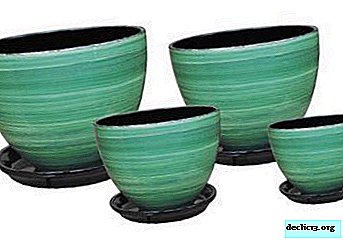 Experienced florists advise planting a flower in a low, but wide round-shaped container, which can provide good aeration of air around it.
Experienced florists advise planting a flower in a low, but wide round-shaped container, which can provide good aeration of air around it. - Material.
If we talk about the material from which the container is made, then there are no restrictions. Fans of everything environmentally friendly with a clear conscience can put their pet in a clay pot.
Clay is a hygroscopic material, and, therefore, passes air well to the roots and absorbs excess fluid, as an additional drainage. Plastic containers hold moisture well, and aesthetically more attractive: bright colors attract attention from afar. With full confidence, one thing can be said: any pot should have openings for water drainage, and at the bottom there must be a layer of drainage (expanded clay, pieces of polystyrene foam, pebbles).
Soil preparation and its composition
For planting epiphyllum, you can use soil purchased in a specialized store. But you can also prepare the necessary composition with your own hands. To do this, in a ratio of 4: 4: 1: 1: 1 mix:
- turf and leaf land;
- coarse river sand;
- fiber peat;
- charcoal.
You can add some organic fertilizers, such as dry mullein. The main requirement for the soil: friability, providing good breathability, and a slightly acidic environment.
Propagation Instructions
Cactus propagates in three ways: seeds, cuttings, dividing the bush. Consider each method in detail.
Seeds
- Prepare everything you need for sowing: a container consisting of flat dishes, drainage, a substrate for cacti (you can use coarse sand), glass or plastic film, a spatula.
- At the bottom of the container, place a layer of drainage (expanded clay, broken polystyrene foam, pebbles), then pour the substrate.
- It must be properly moistened.
- Seeds are distributed on the surface, they are still sprinkled on top with a thin layer of substrate so that the seeds are buried by 5 mm.
- The pot is covered with glass or polyethylene, placed in a warm, bright place. Recommended temperature of the content is + 20С- + 23С.
- Daily "airing" of crops is carried out: for 0.5 - 1 hour, the protective coating must be slightly opened. The substrate in the container must always remain wet (use a spray bottle).
- With the advent of the first shoots (they look like prickly trihedral cacti), for about 14 to 21 days, the glass or film must be removed completely.
- When the sprouts reach a height of 3-5 cm, they can be transplanted into separate containers.
As they grow, the stems become flat, and the epiphyllums grown in this way bloom in the fifth year.
Leafy cuttings
 When choosing planting material for propagation, preference should be given to a leaf 10-15 cm long (the stalk should not be narrowed down) from a flat shoot. Of course, it must be healthy and apparently intact. The selected stem is placed for a couple of days in a shaded cool place for drying. After this, the stalk is immersed in a glass of water about 2 to 3 cm, in which it stays until spring.
When choosing planting material for propagation, preference should be given to a leaf 10-15 cm long (the stalk should not be narrowed down) from a flat shoot. Of course, it must be healthy and apparently intact. The selected stem is placed for a couple of days in a shaded cool place for drying. After this, the stalk is immersed in a glass of water about 2 to 3 cm, in which it stays until spring.
It is important to monitor the water level in the vessel and, as it evaporates, you need to systematically add it. You can root the petiole immediately into the ground.
Step-by-step landing instructions:
- Prepare all the necessary equipment: a plastic pot (maximum 10 cm in diameter), drainage, substrate, spatula. Attention. The soil for a young cactus should be lighter than for an adult plant. Experts advise that the substrate mixed according to the aforementioned scheme be diluted with peat, i.e. instead of one part of fiber peat, put two parts.
- The bottom is covered with drainage (1-2 cm), then the soil is filled up.
- Having made a small depression in the soil (about 1 - 2 cm or 0.6 - 1 cm, if rooting is done in the soil), a stalk should be placed in it, having straightened all grown roots.
- After this, you need to pour a little more substrate into the container, slightly crushing it with your hands.
- If necessary, the petiole can be supported by tying it to a peg. A plant grown in this way will delight its owner with lush flowering in the second year after planting.
Dividing the bush
Before a large copy of the epiphyllum is divided into parts, it must be watered for several days with water. This will make it possible to soften the soil in order to avoid injury to the root system. After extracting the plants from the pot, the remainder of the substrate is removed, the roots are carefully examined.
In the event that rotten or dried fragments are found, they must be removed with a secateurs, and the slices should be treated with crushed charcoal. The detachable part must have strong, healthy roots and young stems.
Step-by-step landing instructions:
- Prepare the entire inventory: capacity, drainage, substrate, scapula.
- At the bottom of the pot, place drainage with a layer of about 5 cm.
- Pour a small layer into the container.
- Put the plant in the pot, spread its roots.
- All remaining voids are filled with soil.
- You need to knock on the walls of the pot in order to settle the substrate into the voids, its upper layer must be lightly crushed with your hands.
If all the actions have been done correctly and the young plant will be provided with decent care, then next year the epiphyllum will give flowering.
Reference. Succulent feels most comfortable at a temperature of + 20C- + 25C in the spring - autumn period, and + 10C- + 12C in the winter period.Outdoor cultivation
 Epiphyllum is from Mexico. The abundance of light, high temperatures, subtropical climate - these are its "native" living conditions. Transplanting and growing plants in the open ground of northern latitudes is extremely undesirable. The cactus is not adapted to the low temperatures of winter, and this threatens the death of the plant. But a beneficial effect on the development of the plant will have the removal of the pot on a balcony or street in the summer.
Epiphyllum is from Mexico. The abundance of light, high temperatures, subtropical climate - these are its "native" living conditions. Transplanting and growing plants in the open ground of northern latitudes is extremely undesirable. The cactus is not adapted to the low temperatures of winter, and this threatens the death of the plant. But a beneficial effect on the development of the plant will have the removal of the pot on a balcony or street in the summer.
A variant of planting a plant in the ground for the summer period is possible. The basic rules of planting remain the same: drainage, a certain soil composition. Experienced florists advise to simply dig a pot of plants into the ground, this will make it possible to maintain the familiar environment for succulents and make life easier for the grower.
It must be remembered that this plant does not like direct sunlight. As for watering, you need to focus on the condition of the soil. If it has rained and the ground is quite moist, then additional watering is not worth it. In no case do not water the plant with cold water from the water supply system or from the well! And of course, it is necessary to monitor that pests do not attack the epiphyllum, and if this has already happened, then treatment should be started immediately.
Care after landing
Immediately after planting, the pot with the plant is transferred to a dark place, avoiding direct sunlight, and watering should be started only after rooting (approximately 3-5 days). Recommended temperature - + 20C. If the summer is very hot, then spraying with warm water is acceptable.
What to do if the plant does not take root?
Epiphyllum is an unpretentious flower, but nevertheless certain difficulties after planting may occur.
- Rotting the tip of the handle after planting. The reason is excessively wet soil. This situation can be easily corrected: it is enough to remove the stalk from the ground, cut off the decayed tip, air dry for 1 to 2 days and put it on the root again. And, of course, do not abuse watering!
- Poor shoot growth after planting. There may be several reasons: lack of light, inappropriate soil, excessive watering. You can eliminate these problems by moving the plant to a more lighted place, changing the soil, adjusting the irrigation scheme.
- The stems dry and die. Most likely, during the division, the root system was severely injured. In this case, dead stems are removed. The plant as a whole needs to be constantly monitored. You may need another transplant.
- After propagation, the epiphyllum does not bloom in the indicated period. There may be several reasons: not enough light, excessive watering, wintering in a warm room, a lot of nitrogen in the ground. If all these reasons are eliminated, then in the near future the succulent will please the grower with magnificent bloom.
Having done simple manipulations to propagate the plant, you can please yourself and your loved ones with the sight of beauty of more than one blooming epiphyllum. The main condition is compliance with all requirements for the care and maintenance of this plant.
Useful video
We offer you to watch a detailed video about care and transplantation:

 Experienced florists advise planting a flower in a low, but wide round-shaped container, which can provide good aeration of air around it.
Experienced florists advise planting a flower in a low, but wide round-shaped container, which can provide good aeration of air around it.
